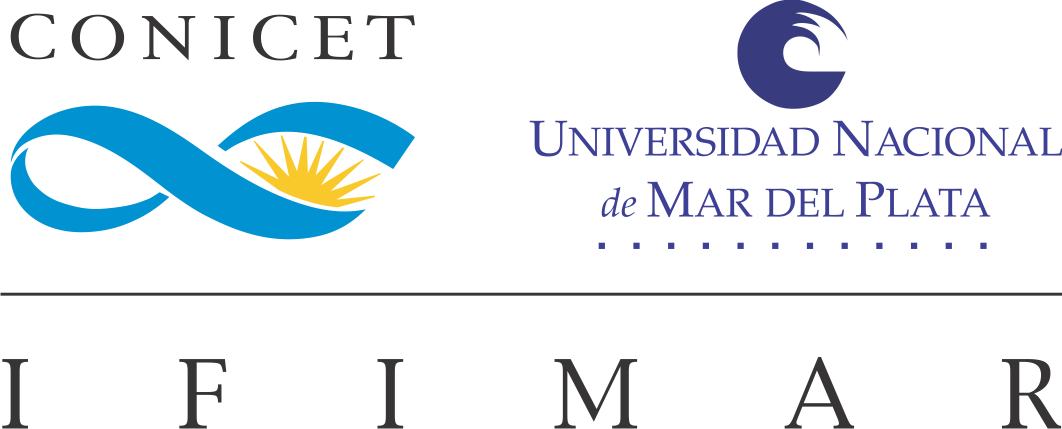The study of complex systems represents a new approach to science that investigates how relationships between parts give rise to the collective behaviors of a system and how the system interacts and forms relationships with its environment. Emergence, auto-organization, collective behavior and pattern formation are some of the most interesting and also important properties that characterize complex systems. For the purpose of studying this subject, different tools from statistical physics, information theory, non lineal dynamics, computational physics, etc are used.
In our group, we study a wide variety of research lines, namely:
-
- Lidia Braunstein
- Cristian La Rocca
- Lucila Álvarez Zuzek
- Matías Di Muro
-
- David Hansmann
- Rubén C. Buceta
- Guido Fier
El estudio teórico de los fenómenos colectivos de sistemas biológicos, desde la perspectiva actual, es un campo que se nutre de los enfoques, formalismos, principios de la Mecánica Estadística y Sistemas Complejos, con las limitaciones que resultan de considerar agentes biológicos en lugar de partículas. Es un área de la Biofísica, en rápido crecimiento en los últimos 20 años, que aprovecha el conocimiento acumulado proveniente del estudio de sistemas cerca y fuera del equilibrio, criticidad auto-organizada, formación de patrones y estructuras, y transiciones de fase, entre otros fenómenos.
Las investigaciones en esta disciplina se llevan a cabo en sistemas que consisten en entidades similares, por ejemplo bacterias, aves, peces, etc., que interactúan entre sí de manera compleja. En determinadas condiciones, el patrón de comportamiento de las unidades individuales de cada sistema puede experimentar cambios provocados por las interacciones con las otras unidades, resultando en un comportamiento colectivo. La variedad de sistemas biológicos que exhiben movimientos colectivos es amplia e incluye bandadas, cardúmenes, etc., tanto para el caso de pájaros, peces, o también de humanos. En nuestro caso, se toma como objeto de estudio colonias de bacterias.
El movimiento colectivo puede ser caracterizado por el estado de orden-desorden. Si bien cada sistema tiene características y patrones de movimiento específicos, es esperable que algunos comportamientos sean universales. Establecer los mecanismos generales por medio de reglas locales puede llevar a establecer los patrones de “escala mesoscópica”, asumiendo que los mecanismos son independientes de los detalles de los componentes del sistema. La caracterización de las reglas de interacción y los mecanismos de comportamiento subyacentes al movimiento colectivo es determinante para una correcta descripción estadística de los observables.
La herramienta principal de investigación que se emplea para el estudio de estos sistemas es el desarrollo de software, su programación y la simulación computacional aplicándolo a sistemas biológicos de interés.
Las simulaciones se hicieron para E.coli con el objetivo de reproducir los resultados experimentales en bibliografía para los tres modos de movimiento: swimming, swarming y sliding. -
Spin ices were first studied in rare-earth pyrochlore Ho2Ti2O7 by Harris et al. in 1997 [1]. They observed that at low temperature spins don’t order, indicating the existence of a strong frustration in the system. Therefore, the ground state is degenerate.

Likewise, in water ice the ground state consists of two protons located inwards each tetrahedron formed by the oxygen atoms and two located outwards this structure. Then this state called “2-in-2-out” fulfills the ice rules. The pyrochlore Ho2Ti2O7 also meet this rule when the magnetic moments are mapped with the Oxygen-Hydrogen positions.
In the last eight years, a new horizon has been opened with the creation of artificial frustrated magnetic systems. These materials consist of arrays of lithographed nanometric monodomains that behave as giant Ising spins. The appropriate choice of the geometrical parameters enables to control the islands interactions at will. In this sense, the system properties are tunable. One of these arrays is the artificial square ice introduced for the first time by Wang et al. in 2006 [2].
In the figure, left side shows an atomic force microscope image of the square ASI while right side corresponds to a magnetic measurement of the system. The three vertices comprising four islands each that are highlighted in different colors indicates different type of vertex. Whilst pink and blue vertices met the ice rule, the green one does not. Properties as the dynamic of this vertices, the effect of disorder, the thermal behavior, the response to an applied field are of our interest, both in square ASI as in any other geometry.
Images from: arXiv:1306.0825.
Working with us
If you are interested in working with us, you can contact directly the researcher via e-mail.

